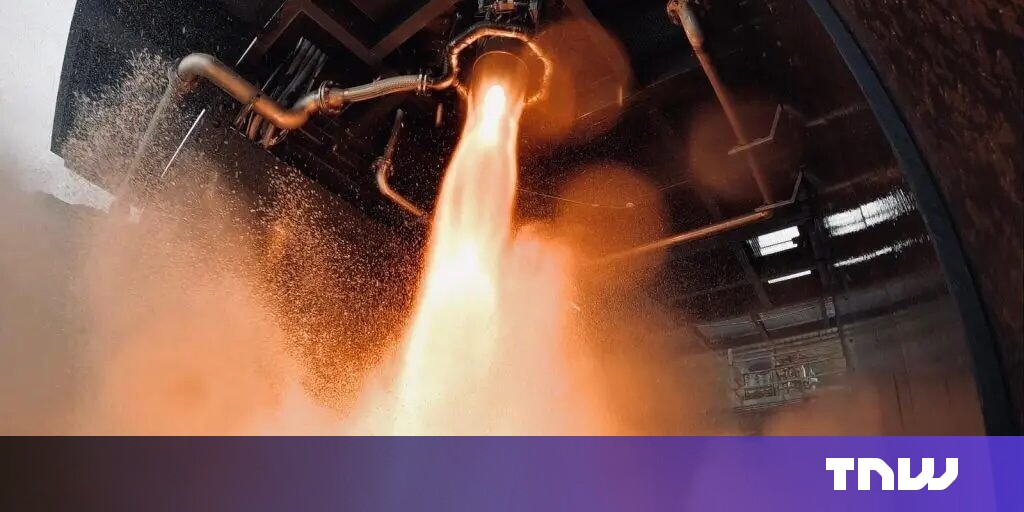Scotland's 3D-Printed Rocket Engine: Orbital Launch Nears
Editor’s Note: Scotland's groundbreaking 3D-printed rocket engine is poised for an orbital launch, marking a significant leap for the nation's space program.
Why This Matters: Scotland's Space Revolution
Scotland's space sector is rapidly expanding, and this imminent orbital launch using a 3D-printed rocket engine signifies a pivotal moment. This innovative technology not only promises cost-effective and faster production of rocket engines but also positions Scotland as a leader in advanced manufacturing and space exploration. The success of this launch will have global implications, showcasing the potential of additive manufacturing in the aerospace industry and inspiring further innovation. This article delves into the key aspects of this revolutionary engine and its upcoming launch, highlighting its significance and potential impact.
Key Takeaways
| Feature | Description |
|---|---|
| Technology | 3D-printed rocket engine using advanced metal alloys |
| Innovation | Reduced production time and cost compared to traditional methods |
| Impact | Potential to revolutionize space launch technology and boost Scotland's economy |
| Launch Status | Imminent orbital launch |
| Significance | Demonstrates Scotland's capabilities in advanced manufacturing and space research |
Scotland's 3D-Printed Rocket Engine: A New Era in Spaceflight
This groundbreaking development represents a significant shift in rocket engine manufacturing. Traditionally, these complex components require extensive machining and assembly, leading to high costs and lengthy production times. Scotland's 3D-printed engine, however, leverages additive manufacturing to create the engine components layer by layer from advanced metal alloys. This process dramatically reduces manufacturing time and associated expenses, opening up new possibilities for more frequent and affordable space launches.
Key Aspects:
- Material Science: The selection of high-strength, lightweight metal alloys is critical for the engine's performance and reliability in the extreme conditions of spaceflight.
- Design Optimization: Advanced design software and simulation tools were employed to ensure optimal performance and durability.
- Testing and Validation: Rigorous testing procedures, including ground-based firings, were conducted to verify the engine's capabilities before the orbital launch.
Detailed Analysis:
The use of 3D printing allows for intricate designs and complex geometries that would be impossible or prohibitively expensive to achieve using traditional methods. This enables engineers to optimize the engine's performance, reduce weight, and improve efficiency. Comparisons with traditional rocket engines highlight the significant advantages of this innovative approach, particularly in terms of cost-effectiveness and speed of production. The potential for scaling up production further amplifies its economic impact.
The Upcoming Orbital Launch: A Milestone for Scotland
The imminent orbital launch is not just a technological achievement; it's a testament to Scotland's commitment to investing in research and development in the space sector.
Facets of the Launch:
- Roles: Collaboration between universities, private companies, and government agencies has been crucial to the success of this project.
- Examples: The meticulous planning and execution of the launch exemplify the high standards required for spaceflight.
- Risks: Potential risks associated with the launch, such as engine malfunction or trajectory deviations, were carefully assessed and mitigated.
- Mitigations: Redundant systems and comprehensive safety protocols have been implemented to ensure a safe and successful launch.
- Impacts: The successful launch will have a significant positive impact on Scotland's economy and international standing.
The Future of Space Exploration: Additive Manufacturing's Role
The success of Scotland's 3D-printed rocket engine points towards a future where space exploration is more accessible and affordable. This technology could revolutionize the entire space launch industry, enabling more frequent and cost-effective missions.
Further Analysis:
This technology isn't limited to rocket engines. Additive manufacturing holds immense potential for creating other critical components for spacecraft, satellites, and even space habitats. Further research and development in this field promise even greater advancements in the years to come.
Closing:
This project serves as a compelling example of how innovation in manufacturing can drive progress in space exploration. The successful launch will inspire further investment and collaboration, paving the way for even more ambitious space ventures.
People Also Ask (FAQs)
Q1: What is Scotland's 3D-printed rocket engine?
A: It's a revolutionary rocket engine manufactured using 3D printing technology, significantly reducing production costs and time.
Q2: Why is this engine important?
A: It demonstrates the potential of additive manufacturing in the space industry, paving the way for more affordable and frequent space launches.
Q3: How can this benefit me?
A: Indirectly, through the economic benefits to Scotland and the potential for future advancements in space technology.
Q4: What are the main challenges with this technology?
A: Ensuring the reliability and durability of the 3D-printed components in the harsh conditions of space.
Q5: How to get involved in this field?
A: By pursuing education and careers in aerospace engineering, materials science, or related fields.
Practical Tips for Following Scotland's Space Program
- Follow reputable space news sources: Stay updated on the latest developments.
- Explore educational resources: Learn more about aerospace engineering and additive manufacturing.
- Support Scottish space initiatives: Look for ways to contribute to the growing space sector.
- Attend space-related events: Network with professionals and enthusiasts in the field.
- Engage in online communities: Connect with people passionate about space exploration.
- Consider a career in aerospace: Explore career paths in this exciting and rapidly growing field.
Summary: Scotland's 3D-printed rocket engine represents a momentous leap forward in space exploration. Its imminent orbital launch is a testament to Scottish innovation and its potential to revolutionize the space launch industry.
Closing Message: The success of this launch will undoubtedly inspire future generations of scientists and engineers. What groundbreaking advancements in space technology will we witness next?
Call to Action: Share this article with your network and stay tuned for updates on the launch! Follow us for more insights into the future of space exploration.
(Include hreflang tags here, tailored to the specific languages targeted)

